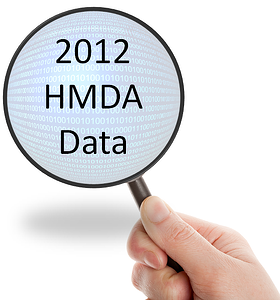In less than 60 days, HMDA data will be made public. The Home Mortgage Disclosure Act is intended to provide the public with loan data that can be used in three primary ways:
- To help determine which financial institutions are serving the housing needs of their communities;
- To assist public officials in distributing public-sector investment so as to attract private investment to areas where it is needed; and
- To assist in identifying possible discriminatory lending patterns and enforcing anti-discrimination statutes.

BACKGROUND - There are two major dates for HMDA every year:
- March 1st - Every March, reporting institutions are required to submit their Loan Application Register (LAR) to the Federal Financial Institutions Examination Council (FFIEC), the interagency body that administers HMDA.
- This is the date that most financial institutions identify with (it requires clear and definite work in order to accurately submit the HMDA LAR).
- Mid-September – Every year, the FFIEC screens the data for errors and releases it to the public in or around the middle of September. Individual financial institution disclosure statements, individual institution’s LAR data, and MSA and nationwide aggregate reports are available at http://www.ffiec.gov/hmda .
- This is the mid-September date that is most often forgotten. However, this date is becoming increasingly important. The regulatory bodies are more data-centric than ever before. The way the regulator sees a financial institution is heavily influenced on the data they have on hand, including HMDA data. Therefore, it is critically important that your financial institution understand your data and is prepared to augment what the data is conveying about your organization.
The HMDA data facilitates the fair lending examination and enforcement process and promotes market transparency. According to the FFIEC, “When examiners evaluate an institution’s fair lending risk they analyze HMDA data in conjunction with other information and risk factors in accordance with the Interagency Fair Lending Examination Procedures.”
A Timely Reminder Via the $25 Billion Mortgage Relief Settlement
GET READY FOR RELEASE - Several fair lending risks can be easily explored with your HMDA data through a single report:
- Underwriting Risk (part 1) – Explore your Denial Rate frequency to determine if there are disparaties for applicants by monitored prohibited basis characteristic.
- Key Questions: Are your denial rates higher for prohibited basis groups? How do you compare to your peers and other benchmarks?
- Underwriting Risk (part 2) – Closely related to your Denial Rate frequency, you will also want to review your Denial Disparity Index. This index provides the rate of denials of a specific prohibited basis group relative to the rate of denials for the control group (typically white male, non-Hispanic).
- Key Questions: Any index value greater than one (1.00) indicates nonparity. Values greater than 1.50 are indicative of the need for more detailed examination. How do your numbers compare to HMDA filers in your market, your state and national numbers?
- Marketing Risk – Explore your Application Rates to determine if proportion of monitored prohibited basis applicants is significantly lower than the group’s representation in the total population of the market area.
- Key Questions: How do your application rates compare to your underlying market area demographics? How do you compare to your peers and other benchmarks?
- Compliance Risk – Review your “Not Provided” numbers.
- Key Questions: How are you doing compared to peers and national benchmarks in collecting the Government Monitoring Information (GMI)? Is the instance of "Not Provided" higher for applications taken by telephone, mail or the internet? Are your lenders trained to note the data on the basis of visual observation or surname?
- Redlining Risk – Evaluate if there are significant differences in the number of loans originated in areas with relatively high concentrations of minority group residents.
- Key Questions: Are there significant differences between denial rates in census tracts with high concentrations of minorities? Again, how do you compare to others in market, state or on a national basis?
The September HMDA release date is right around the corner, and the regulators are living in a data-centric world. Are you prepared to tell the story behind your numbers?
Fair Lending Importance Underscored by Attorney General at Judiciary Hearing
FREE REPORT TO HELP YOU PREPARE: It is not difficult to get prepared with the right support. Start today by reviewing your 2011 data! Click here to request a free report that uses your actual HMDA data.